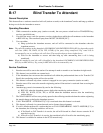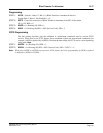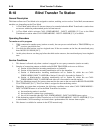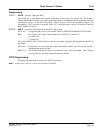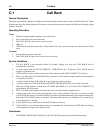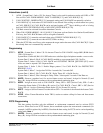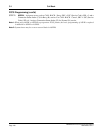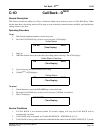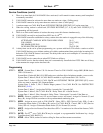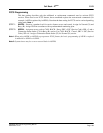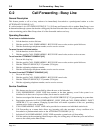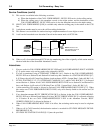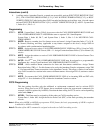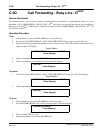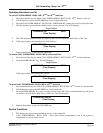
NEAX2400 IPX Feature Programming Manual
Page 108 NDA-24297, Issue 1
C-1D Call Back - D
term
Service Conditions (cont’d)
4. There is no time limit for CALL BACK. Once activated, it will remain in status memory until completed
or manually cancelled.
5. CALL BACK cannot be activated to more than one station at a time. (Calling party).
6. CALL BACK cannot be set by more than one station at a time. (Called party).
7. A station cannot use CALL BACK and OUTGOING TRUNK QUEUING [O-2] at the same time.
8. When the calling station is called back, STATION HUNTING [S-7, 8, 9] and CALL PICKUP [C-7]
programming will be ignored.
9. There is no limit to the number of stations that may access this feature simultaneously.
10. CALL BACK can only be activated from MY Line of a D
term
.
11. CALL BACK cannot be established to a busy station when the station is engaged in any of the following:
ATTENDANT CAMP-ON WITH TONE INDICATION [A-1]
CALL HOLD [C-6, C-6D]
OFF-HOOK QUEUING [O-7]
OUTGOING TRUNK QUEUING [O-2, O-2D]
12. A delay timer can be set in system programming, on a system-wide basis. This allows a station to which
CALL BACK has been set to initiate another call within a predetermined time period after becoming idle,
before the CALL BACK feature is activated. The delay timer can be set in multiples of 2 seconds, up to a
maximum of 14 seconds.
13. CALL BACK service cannot be set when FCCS links are all busy.
14. CALL BACK service that has already been set is automatically cancelled when FCCS links are all busy
at the moment the target station becomes idle.
Programming
STEP 1: ASYD - System Data 1, Index 139. No Answer Timer for CALL BACK. Assign 00H. (RAM data is
3FH = 30 seconds.)
System Data 1, Index 68, Bit 0. 0/1: SHF and access code/last digit of telephone number + access code.
System Data 2, Index 0, Bit 0. Is CALL BACK enabled on a per-tenant basis? 0/1: No/Yes.
System Data 2, Index 4, Bit 0. CALL BACK and OUTGOING TRUNK QUEUING [O-2] access
codes are same or separate? 0/1: Separate/Same.
System Data 3, Index 3, Bit 5. Enable Ringer pattern 5 for CALL BACK. See DISTINCTIVE
RINGING [D-10].
System Data 3, Index 7. Assign data 24H for 4 seconds On, 2 seconds Off.
System Data 1, Index 5, Bit 7: CALL BACK - Delay Timer: 0/1 = Out/In Service.
System Data 1, Index 5, Bits 4 through 6: Delay Timer. Value equals 2 seconds X the Data set.
STEP 2: ANPD - Reserve a number level for service feature access and cancel. Assign for Normal (N) and
Busy (B). Assign NND in accordance with a predetermined numbering plan.
STEP 3: ASPA - Assign an access code to CALL BACK - Entry, SRV = SSC (Service Code), SID = 3 and a
Connection Status Index (CI) for Busy (B) service. For CALL BACK - Cancel, SRV = SSC (Service
Code), SID = 6. Assign a Connection Status Index (CI) for Normal (N) service.
STEP 4: ASFC - Assign a Service Feature Class that allows SFI = 2 to stations to be allowed the feature, CALL
BACK.
STEP 5: AKYD -ForD
term
sets, CALL BACK may be assigned to a programmable line/feature key. Assign
Type:Function:CALL BACK [5].
STEP 6: ATNR - Allow TRI 0, station-to-station calling for Inter and Intra-tenant connections.



